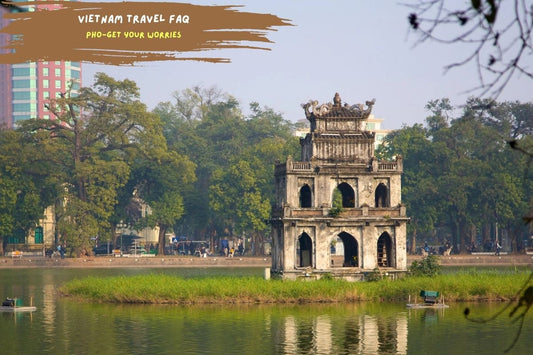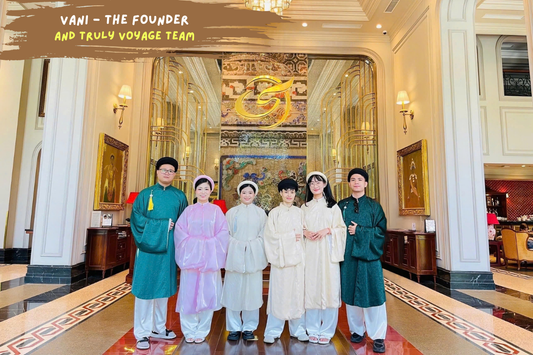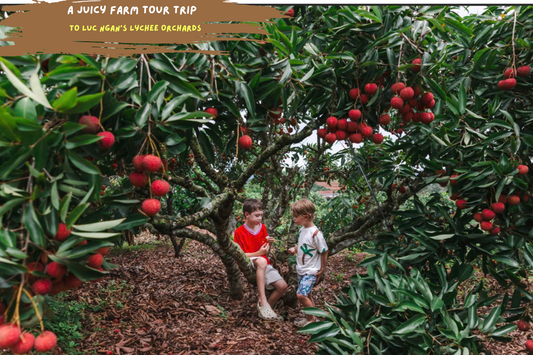A Friendly Guide to Hanoi’s Dining: From Fine Restaurants to Street Food Fun
Share
Let’s get this out of the way first: Vietnam has four cities known for unforgettable food tours — Hanoi, Hue, Hoi An, and Ho Chi Minh City. But if you had to choose just one, make it Hanoi. I say this with love and honesty: you could skip the other three and still feel like you’ve eaten your way through the heart of Vietnam. Hanoi’s food scene simply has it all — and by the end of this article, I think you’ll agree with me.
Here’s why: Hanoi’s cuisine isn’t just delicious — it’s diverse in texture, temperature, and taste. You’ll find soft dishes like bánh cuốn, crispy ones like bánh xèo, hot broths (phở bò), cold noodles (bún), sweet desserts (chè, kem tươi), tangy salads (nộm bò khô), and spicy grilled meats (bún chả). From smoky, charcoal-grilled pork patties to delicate rolls steamed over hand-crafted cloth steamers, Hanoi offers techniques and flavors you won’t find elsewhere. Even its coffee is at the next level – egg coffee, salt coffee, coconut coffee – each one uniquely Hanoian.
This guide will walk you through the city’s best dining experiences – from elegant French-Vietnamese fusion restaurants to back-alley food stalls that have been perfecting a single dish for generations. Whether you're in the mood for something modern, traditional, or wildly creative, we’ve got you covered.
Fancy Dining in Hanoi: Elegance and Authenticity
✨ Le Beaulieu (and her cousin - Spices Garden)
At 15 Ngô Quyền Street, Hoàn Kiếm District

Hanoi’s high-end dining often blends colonial charm with local flavors. The historic Sofitel Legend Metropole Hotel (now Capella Hanoi Hotel) is a prime example: the hotel is the host for ~ Le Beaulieu ~ its elegant French restaurant, which has been in business since 1901.
The décor - blue velvet banquettes and crystal chandeliers - feels exactly like it came out of “the good old days,” and the menu offers century-old classics like lobster bisque and house-cured salmon. Michelin raves that at Le Beaulieu, “lobster bisque and house-cured kingfish or salmon come with guéridon service, just like in the good old days”. (In other words, expect tableside service and French luxury.)
Spice Garden

Want to see something cool? Click here to check out their virtual tour!
While Le Beaulieu offers a refined French dining experience, Spice Garden serves as its Vietnamese counterpart, celebrating the rich culinary heritage of Vietnam within the same historic Sofitel Legend Metropole Hotel.
Located just steps away, Spices Garden provides an authentic journey through Vietnamese flavors, offering a harmonious balance to Le Beaulieu's French sophistication.
Under the guidance of Chef Duc, Spices Garden presents traditional Vietnamese dishes with a contemporary twist, utilizing fresh, locally sourced ingredients, some of which are cultivated in the hotel's own urban garden.
The restaurant's ambiance combines timeless tradition with modern allure, creating an inviting space that resonates with both locals and travelers. Guests can indulge in à la carte selections or partake in the Saturday BBQ Buffet Dinner, featuring live cooking stations and an array of Hanoi specialties
💡Psh! Remember: Spice Garden's Saturday BBQ Buffet Dinner is a hit with families. Children under 6 dine for free, and those aged 6 to 11 receive a 50% discount
✨KOTO Restaurant
At 35 Văn Miếu Street, by the Temple of Literature

Meanwhile, KOTO Restaurant offers both Vietnamese and Western dishes in a charming heritage townhouse. It’s not “fancy” in the European sense, but it’s highly recommended – partly because it’s a training school for disadvantaged youth. Travel writer Mark Bowyer enthuses that KOTO “is no ordinary restaurant… You can combine a great meal, a juice or a coffee, and make a modest contribution to the education of some wonderful young people.”
💡 Pro tip: KOTO has an upstairs dining room that’s cooler and quieter.
Tay Ho Café & Food Scene
While the Old Quarter pulses with street food energy, Tây Hồ (West Lake) invites you to slow down. This leafy lakeside neighborhood is Hanoi’s unofficial café capital — a favorite haunt of expats, artists, foodies, and well-off locals. Here, the vibe is quieter, the trees are taller, and brunch often comes with a view of rippling water or soft jazz.
But don’t mistake “expat-friendly” for generic — Tây Hồ cafés and restaurants still pack a uniquely Vietnamese punch. Many are chef-owned, infused with local flavors, and built with serious love for Hanoi's food culture.
🍵 Coffee Shops
Craving for a cuppa Joe? West Lake has 101 ways for you to enjoy what is possibly THE BEST coffee in this corner of South East Asia. Have you tried:
✨ Maison de Tet Decor
At: 58 Từ Hoa Street, Tây Hồ District

Nestled in a charming French villa at 58 Phố Từ Hoa, Maison de Tet Decor continues to enchant visitors with its serene ambiance and commitment to organic, gluten-free Vietnamese and European cuisine. Their house-roasted coffee, sourced from local farms, complements a menu crafted in an open-plan kitchen by skilled chefs. Whether you're seeking a peaceful workspace or a leisurely brunch spot, this café offers a perfect retreat with views overlooking West Lake.
✨ Oriberry Coffee
At: 28 Quảng An Street, Tây Hồ District & 24A Tô Ngọc Vân road, Tây Hồ District

As a social enterprise supporting local coffee and tea producers, Oriberry Coffee has expanded its presence in Tây Hồ with two locations: 28 Quảng An and 24A Tô Ngọc Vân. Both cafés offer reasonably priced fare and excellent views across West Lake. The upstairs seating areas provide a quiet environment, ideal for working or relaxing with a cup of their ethically sourced coffee.
✨ The Click's Spacebar Coworking Space
At: Villa 15, Lane 76, Tô Ngọc Vân road, Tây Hồ District
Located at Villa 15, Lane 76, Tô Ngọc Vân, Spacebar seamlessly blends a café atmosphere with coworking facilities. Set in a leafy West Lake environment, it's a favored spot for digital nomads and creatives. The menu offers a variety of food and coffee options to keep you fueled throughout your workday.
🍜 Diners & Restaurants
To eat or not to eat? That’s not the question here at Hanoi, the question is WHERE to eat? Well, try some of our favourite spots (that won’t break your bank):
✨ Duong’s Restaurant
At: 27 Ngõ Huyện Street, Old Quarter

Set in a charming townhouse on 27 Ngô Huyền, Duong’s feels like visiting a friend who happens to be a Michelin-star hopeful. Chef Duong himself trained internationally but returned home to give Vietnamese food a contemporary lift. His signature tasting menu often includes dishes like seared duck breast with orange sauce or salmon glazed in Vietnamese spices, blending local flavors with modern plating.
What sets Duong’s apart? It’s not just a fusion place — it’s a love letter to Vietnamese classics, reimagined. Diners rave about the attentive service and “everything we ordered was fresh, delicious, and plated beautifully.” Even locals pop in for special occasions. (Pro tip: ask for the Chef’s Choice set.)
✨ Cồ Đàm – Mindful Vegetarian
At: 68a Trần Hưng Đạo Street, Old Quarter

Located at 68 Trần Hưng Đạo, not far from the Old Quarter, Cồ Đàm is one of Hanoi’s most beautiful vegetarian restaurants — and one of its most soulful. Named after the Buddha, it’s set in a serene villa with poetic architecture and calm lighting. The food? Michelin calls it “creative, modern twists on exquisitely presented Vietnamese classics.”
What makes it special isn’t just that it’s vegetarian, it’s that you forget it is. Their jackfruit-stuffed rice rolls, lotus root salads, and tofu claypots are packed with flavor and plated like artwork. Even carnivores walk away impressed.
✨Anita’s Cantina
At: 36 Quảng Bá Street, Tay Ho District

At 36 Quảng Bá Street, Anita’s Cantina brings a slice of Tex-Mex to Hanoi. With a relaxed garden atmosphere, this eatery serves up fresh, handmade dishes like tacos and enchiladas, all crafted from scratch. It's an ideal spot for a quick bite or a leisurely evening with margaritas in hand.
✨Cugini Ristorante Italiano
At: 67 Tô Ngọc Vân Street, Tay Ho District

Situated at Lane 67 Tô Ngọc Vân Street, Cugini offers an authentic Italian dining experience. The restaurant's cozy and homey atmosphere, combined with professional and attentive staff, makes it a standout choice for Italian cuisine enthusiasts. Their menu features classics like wood-fired pizzas and handcrafted pastas, ensuring a delightful meal every time.
✨Turtle Lake Brewing Company
At: 105 Quảng Khánh, Tay Ho District

Located at 105 Quảng Khánh, Turtle Lake Brewing Company is Hanoi’s premier craft brewery. Set in a spacious venue by the lake, it offers a wide selection of craft beers brewed on-site. The outdoor patio provides a cozy atmosphere, making it a popular spot for both locals and expats.
Street Food & Pavement Dining: Old Quarter Flavors
Hanoi’s Old Quarter is a sensory overload in the best possible way — a maze of narrow alleys alive with the smell of sizzling pork, bubbling broths, and charcoal smoke. Don’t be put off by the low plastic stools or humble sidewalk setups — many of these food stalls have been around for 30 to 50 years, passed down through generations. Each one usually serves just one dish, perfected over decades.
The result? A level of consistency and mastery that even 5-star restaurants struggle to match. As one travel blogger put it, many street spots are “as grotty as they are glorious.”
Let’s break down the icons:
✨Phở – Vietnam’s National Soul Food

A signature dish of Phở Bò - Beef Phở
You may have had phở in Paris, New York, or Sydney, but nothing compares to tasting it in Hanoi. Why? The broth. At traditional phở spots like Phở 10 Lý Quốc Sư (10 Lý Quốc Sư Street), the soup is simmered for over 12 hours, using beef bones to coax out a deep, naturally sweet flavor. And here’s a local secret: the bottom of the pot is the best part, richer, more intense, and unforgettable.
The beef slices, whether rare (tái) or well-done, are melt-in-the-mouth tender. Add fresh herbs and a squeeze of lime, and you’ll understand why visitors who try it here often abandon their favorite phở joints back home. It's that life-changing. Vegetarian? Ask for “phở chay” – most places can whip up a tofu-and-veg version.
✨Bún chả – Smoky, Sweet, and Purely Hanoi

Grilled pork perfection meets fresh herbs and vermicelli
What makes bún chả special? It’s all about the charcoal-grilled pork — smoky, slightly caramelized, often marinated in lemongrass or shallots. You’ll spot clouds of fragrant smoke rising from sidewalk grills. The dish comes with rice vermicelli, fresh herbs, and a dipping sauce that strikes the perfect balance of sweet, sour, and savory

A feast fit for the everyday folks.... and the POTUS!
A classic spot is Hương Liên (24 Lê Văn Hưu Street – yes, the one where Obama ate!), but Bún Chả Ta (21 Nguyễn Hữu Huân) offers a more spacious and tourist-friendly option. They also serve a vegetarian version: noodles, crispy tofu, and tangy tomato broth, plus crunchy spring rolls.
✨Bánh cuốn – Paper-Thin Perfection
 Delicate steamed rice rolls enveloping savory pork and mushrooms, topped with crispy shallots
Delicate steamed rice rolls enveloping savory pork and mushrooms, topped with crispy shallots
This dish looks simple, but it’s an art. Each rice roll is hand-steamed on a cloth stretched over boiling water, creating a sheet so thin it’s nearly translucent — something machines still can’t replicate. Filled with minced pork and mushrooms, topped with crispy shallots and served with fish sauce, bánh cuốn is one of Vietnam’s most elegant comfort foods.
Try Bánh Cuốn Bà Hoành (42 Cao Thắng Street), a local legend that's been perfecting the craft for decades.
✨Bánh Mì – Vietnam’s Crispy, Flavor-Packed Icon

The extravagant inside of a Bánh Mì
Bánh mì is more than just a sandwich; it's a culinary emblem of Vietnam that has garnered international acclaim. Recognized by the Oxford English Dictionary in 2011 and featured in CNN's list of the world's best sandwiches, bánh mì has become a global favorite.
At its core, bánh mì combines a crispy, airy baguette—often made with a blend of wheat and rice flours—with a harmonious mix of savory fillings and fresh herbs. The contrast between the crunchy crust and the soft interior provides the perfect vessel for a variety of ingredients.
A Symphony of Flavors in Every Bite
What sets bánh mì apart is the explosion of flavors and textures in each mouthful. Imagine biting into a warm, crispy baguette filled with:
-
Savory Proteins: Options like roasted pork, grilled chicken, or fried eggs offer rich, smoky flavors.
-
Fresh Herbs: A medley of cilantro, basil, and mint adds a refreshing zest.
-
Pickled Vegetables: Crisp pickled carrots and daikon provide a tangy crunch.
- Condiments: Creamy pâté, spicy chili sauce, and mayonnaise tie all the elements together.
The combination creates a balance where the richness of the meats and condiments is offset by the freshness of the herbs and the acidity of the pickles, all encased in the delightful crunch of the baguette.
📍 Where to Find the Best Bánh Mì in Hanoi
-
Bánh Mì 25 (25 Hàng Cá Street): A popular spot in the Old Quarter known for its house-made pâté and roasted pork fillings.
-
Local Street Carts: For a more traditional experience, seek out smaller vendors offering variations like grilled pork (thịt nướng) or vegetarian options with egg and tofu.
Whether you're grabbing a quick bite on the go or savoring it slowly, bánh mì offers a taste of Vietnam's rich culinary heritage in a convenient, handheld form.
✨Bánh xèo – Crispy Pancakes to Wrap and Roll
Golden, sizzling pancakes filled with shrimp and pork — that’s bánh xèo. You get to roll them yourself in lettuce with herbs, dip them in fish sauce, and bite into the crunchy, savory goodness.
A hidden gem is Nhà Hàng Mr. Bảy (47 Hàng Điếu), where the hands-on dining makes the experience extra fun.
✨Chả cá – Hanoi’s Signature Fish Dish

A sizzling dish of authentic Chả Cá
No dish says “Hanoi” like chả cá, a sizzling specialty that’s equal parts delicious and theatrical. Fresh white fish — boneless and marinated in turmeric — is brought to your table and cooked over a live flame with a mountain of fresh dill and spring onions. It's served hot, always hot, and the aromas alone could stop traffic.
But the real kicker? The dipping sauce. Chả cá is traditionally eaten with a bold fermented shrimp paste called mắm tôm — a one-of-a-kind condiment that’s not for the faint of heart. On its own, the smell can be intense. But once whipped with lime juice, sugar, and chili, it turns into a frothy, flavorful bomb that might just make you demolish the entire pan of fish.
For the most iconic experience, head to Cha Ca Lã Vọng (14 Chả Cá Street - The dish so good they named the street after it!) — a family-run institution for over a century. All set? You’re in for a deeply local, unforgettable Hanoi meal.
✨Sweet Treats & Egg Coffee

The 101 ways to combo your "chè" into a mouth-watering summer treat
For dessert, snack on xôi ngọt (sticky rice with coconut and mung bean) or order a chilled chè on hot afternoons.
But don’t leave Hanoi without sipping cà phê trứng – egg coffee. The magic? The egg is whipped so perfectly it’s no longer eggy — just creamy, frothy, and rich like a dessert in a cup.
Start with Café Giảng, the birthplace of egg coffee, or try The Note Coffee (for a more playful vibe.
TL;DR? Hanoi street food isn’t just delicious — it’s a cultural heritage on a stool. These stalls don’t serve “fast food,” they serve generational craft. Every bowl, every bite tells a story. And once you taste it, you might just find yourself planning next year’s return trip around your favorite dish.
Food Safety & Traveling Tips

When eating street food, keep a few safety tips in mind. As a general rule, choose stalls that are busy with locals, since high turnover means fresher food. Make sure dishes arrive piping hot.
Always wash your hands (carry sanitizer) before digging in. Avoid raw or undercooked items – for example, skip raw seafood and be wary of uncooked salads. You can even ask vendors to blanch vegetables (“rau trần”) if you’re nervous.
Bottled water is essential in Vietnam – tap water isn’t drinkable, and ice at small street carts can be the prime suspect for stomach cramps. Stick to reputable brands of water and use ice only in nicer cafés.
One quick “visual check”: if a stall’s utensils and surroundings look grimy, just move on. With those precautions, first-timers or senior travelers can safely enjoy even late-night snacking (many stalls stay open past 9 pm).
💡Here’s a quick orientation to key districts and how to get there:
Hoàn Kiếm/Old Quarter:

This compact area is very walkable. Many attractions (Ngọc Sơn Temple, Water Puppet Theater) and restaurants are within a 10–15 min walk of Hoàn Kiếm Lake. Wear comfortable shoes and watch for scooters – sidewalks can be uneven.
For longer distances, Grab cars or moto-taxis (xe ôm) are cheap and plentiful. Try to download the Grab App through your iPhone App Store or Google Play Store for Android users to enjoy stable pricing.
A cyclo (pedicab) ride can be fun for a slow loop (especially around the lake at dawn or dusk), but the ride can be bumpy, and it’s less common for locals. I recommend Grab or taxis for senior travelers when going farther (Tây Hồ, train station, airport).
Tây Hồ (West Lake)

As noted, this expat area is about a 10–15 minute taxi ride from Hoàn Kiếm. The concentration of cafes and restaurants is north and west of the Hồ Tây Trẻ intersection (Quảng An and Xuân Diệu streets). If you do go, dress respectfully (many places are casual, but no bare feet).
Ngọc Hà / Lăng Bác area

If you visit the Ho Chi Minh Mausoleum by day, nearby Quán Ăn Ngon (literally: Restaurant with good food - very to-the-face right?) on 34 Phan Đình Phùng Street serves a variety of local dishes in an open but tidy setting – it’s touristy but clean and comfortable - a good option for older visitors who want to try different foods (everything from bánh khọt to grilled squid) in one place.
Etiquette & Practical Tips:

Vietnamese meals are very communal. Dishes are shared from the center of the table onto your personal bowl. When passing plates, use both hands or your right hand – it’s the polite thing to do.
- If locals refill your glass or add food to your bowl, they are being hospitable. Note that most Vietnamese people wait for the eldest at the table to start eating first, so if you’re dining with Vietnamese friends or family, feel free to gesture to an older guest to begin.
- You won’t offend anyone by digging in; in fact, it’s fine to pick up your rice bowl to your mouth (unlike in some cultures).
- Hanoi restaurants generally don’t expect tips, but a small “thank you” tip (5–10%) is appreciated at nicer establishments. It’s not obligatory, though. And if you’re invited by a Vietnamese host, know that often the eldest person pays the bill – but as a visitor, it’s always polite to offer.
-
For dietary needs: many Vietnamese dishes are vegetarian (they call it “chay”) or can be made so. Look for chay on the menu or ask for tofu/vegetables instead of meat (Bún chả chay, phở chay, spring rolls chay, etc.).
- Cồ Đàm (above) or dedicated veg restaurants like The Veg (1 Tống Duy Tân Street, Hàng Bông Ward) have full vegetarian menus. Gluten-free diets are easier here than you might think: most staples are rice-based (phở, bún, sticky rice, rice flour pancakes are all gluten-free by nature).
- Just watch out for wheat-based items: bánh mì and bánh cuốn have wheat, and many sauces/soups use soy sauce (which contains gluten). If needed, mention “gluten” to servers – they can often substitute tamari or omit soy sauce.
- Finally, a note on adventurous choices: Vietnamese cuisine is safe and quite clean, but some dishes involve exotic meats. If you’re not feeling brave, steer clear of wild animal dishes (snake, rat, civet, etc.) These are rare in Hanoi restaurants anyway, but you might spot them at special markets or some rustic eateries. We definitely recommend sticking to the classics listed above – your stomach (and common sense) will thank you.
AND THAT'S A WRAP.... OF SPRING ROLL!
Hanoi’s food scene is like a tapestry: elegant hotels and hidden stalls side by side, history and new trends together. By day or night, there’s always a new flavor to try. As one traveler put it, the pho broth in a busy alley stall can be “life-changing” – and I wholeheartedly agree. The mix of street energy and warm hospitality means that even senior travelers will leave Hanoi with unforgettable meals and memories. Enjoy the journey, and ăn ngon miệng (eat well)!



